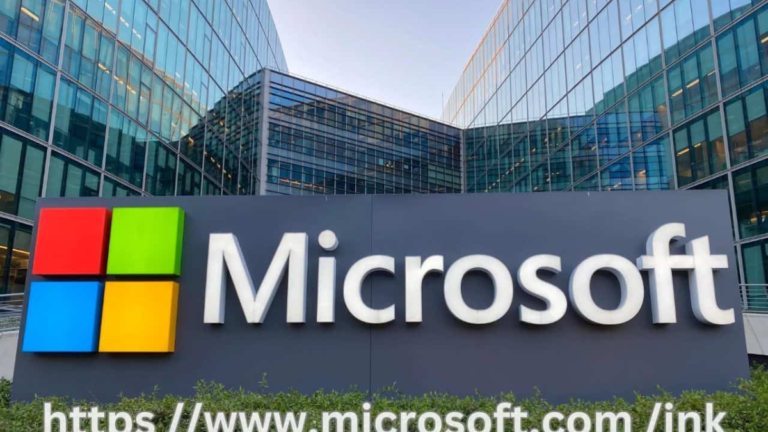Introduction to Microsoft Ink
In today’s digital landscape, creativity and productivity are more interconnected than ever. Microsoft Ink, available at https //www.microsoft.com /ink, is a powerful tool that allows users to express their ideas through digital ink. With features designed for everyone from casual users to professionals, Microsoft Ink has become an essential resource for enhancing the digital experience. In this article, we will explore what Microsoft Ink is, how it works, and its various applications.
What is Microsoft Ink?
Microsoft Ink is a suite of features designed for pen input across Windows devices. This technology enables users to draw, annotate, and write directly on their screens, replicating the natural feel of pen and paper. Whether brainstorming ideas, sketching designs, or marking up documents, Microsoft Ink provides the tools needed to do so seamlessly.
Key Features of Microsoft Ink
1. Natural Writing Experience
One of the standout features of Microsoft Ink is its ability to mimic traditional writing. With pressure sensitivity and tilt recognition, users can create realistic strokes, making it especially beneficial for artists and designers who require precision.
2. Annotation Tools
Users can easily annotate documents and images using Microsoft Ink. This feature is crucial for professionals who need to provide feedback on presentations or reports. Highlighting, underlining, and adding notes directly onto documents streamlines the review process.
3. Integration with Microsoft Office
Microsoft Ink is seamlessly integrated into Microsoft Office applications like Word, PowerPoint, and OneNote. This integration allows users to leverage ink capabilities in their daily tasks, enhancing productivity and collaboration. For instance, in PowerPoint, users can draw on slides during presentations, making delivery more engaging.
4. Accessibility Features
Microsoft Ink prioritizes accessibility, offering tools that cater to individuals with varying abilities. Features such as voice-to-text and high-contrast modes enhance usability for all users.
5. Cross-Platform Support
With the rise of remote work and mobile computing, Microsoft Ink supports various devices, including tablets and 2-in-1 devices. This cross-platform capability allows users to work from anywhere, maintaining productivity regardless of location.
Applications of Microsoft Ink
1. Education
In educational settings, Microsoft Ink can transform interactions with content. Educators can annotate lessons in real-time, while students can take handwritten notes that are easily organized and searchable in OneNote. This interactive approach fosters engagement and improves learning outcomes.
2. Creative Design
For graphic designers and artists, Microsoft Ink offers tools that facilitate creativity. Users can sketch and illustrate directly on their devices using software like Adobe Creative Cloud alongside Microsoft’s tools. The precision and fluidity of digital ink allow for detailed artwork and designs.
3. Business Collaboration
In the corporate world, collaboration is essential. Microsoft Ink enhances teamwork by allowing colleagues to brainstorm visually. Using digital whiteboards, teams can sketch concepts and share feedback in real-time, promoting creativity and accelerating project timelines.
4. Note-taking and Organization
OneNote, part of the Microsoft Office suite, integrates Microsoft Ink for note-taking. Users can jot down ideas, create to-do lists, and sketch diagrams—all in one place. The ability to convert handwritten notes to text further enhances organization, making it easy to retrieve information later.
Also Read: The Essentials of Localhost: Understanding 127.0.0.1:62893
Getting Started with Microsoft Ink
To begin using Microsoft Ink, visit https //www.microsoft.com /ink and ensure your device supports Windows Ink. Here’s a quick guide on how to get started:
- Check Compatibility: Confirm that your device supports Windows Ink. Most modern laptops and tablets do.
- Select Your Tool: Choose the Microsoft application you want to use, such as OneNote or PowerPoint.
- Access the Ink Workspace: In your chosen application, look for the “Draw” tab to access ink tools. Here, you can select different pen styles, colors, and thicknesses.
- Start Creating: Begin drawing, annotating, or writing. Experiment with different tools to find what works best for you.
Tips for Maximizing Microsoft Ink
- Experiment with Different Pens: Try various pen types and colors to find the best combination for your needs.
- Use Templates: In OneNote, utilize templates for specific projects to streamline your workflow.
- Regularly Save Your Work: Ensure you save your documents frequently to avoid losing any annotations or drawings.
- Explore Online Resources: Microsoft offers tutorials and community forums where you can learn tips and tricks from other users.
Conclusion
Microsoft Ink is a powerful tool that enhances creativity and productivity across various domains, from education to business. By allowing users to interact with their digital devices in a natural and intuitive way, Microsoft Ink bridges the gap between traditional pen-and-paper methods and modern digital workflows. To learn more about Microsoft Ink and how it can benefit you, visit https //www.microsoft.com /ink. Whether you’re an educator, designer, or professional, incorporating Microsoft Ink into your daily routine can transform the way you work and create.


